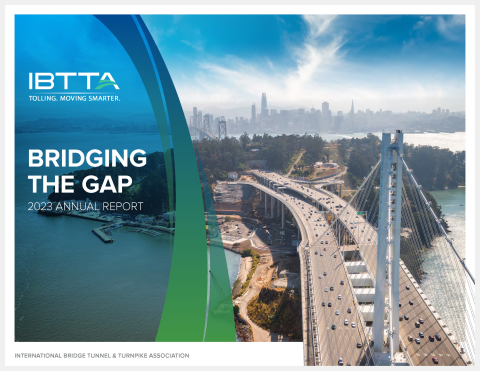- Home
- IBTTA Insights
- Data Analytics Can Deliver 15 Percent Savings on Portfolio Management
Stories
Data Analytics Can Deliver 15 Percent Savings on Portfolio Management


The analysts and number crunchers at McKinsey & Company have come up with a big opportunity for anyone who owns, operates, or maintains a physical asset: the rise of analytics, not just to deliver projects, but to conduct capital planning across the asset life cycle.
It isn’t that the conversation about analytics is new. By now, you would think organizations would have baked the technology and its powerful potential into every aspect of their work.
To one degree or another, most IBTTA members have.
But across both the public and private sectors, McKinsey still sees a lot of room for improvement. “To the extent managers are applying data-driven methods in infrastructure, it is predominantly in the project delivery phase rather than through integration into capital planning,” write consultants John Levene, Sacha Litman, Ian Schillinger, and Chris Toomey.
“As a result, many asset owners experience weaker capital productivity than what we see in other sectors, as they are making big infrastructure decisions based primarily on qualitative, rather than quantitative, factors.”
Small Shift Delivers Big Savings
McKinsey sees the potential for big savings for asset owners, just by fully applying systems and methods that may already be on their radar.
“Through our work with infrastructure owners and operators, we have been applying advanced analytics approaches to generate deeper insights and value on infrastructure life cycles, maintenance versus replacement decisions, and asset longevity trends,” the consultants state. “Taking advantage of data-driven methods when making decisions in these areas could help asset owners free up capital—we’ve seen five to 15 percent portfolio savings—and permit them to reallocate money to more attractive projects.”
Their article suggests a methodology organizations can adopt to position themselves as data analytics leaders. The details show that this is really a situation where you get what you pay for—the more effort you invest, the greater the competitive advantage you have.
Getting Back What You Put In
McKinsey describes a 12-stage model that spans the continuum from the most basic data management to the most advanced analytics. The first step is to at least take your raw data and clean it up, then use it for standard reporting and ad hoc queries.
With a bit more effort devoted to descriptive analytics and dashboards, companies can take advantage of data filtering, alerts, clustering, trend forecasting, and statistical analysis.
But the real prize in competitiveness and cost savings comes at the most sophisticated level, with predictive analytics, optimization and simulation modelling, and prescriptive techniques transforming the way data drives efficiency and performance.
“When applied to infrastructure, acting on these predicted trends can radically improve the ability of owners to make capital planning decisions based on the expected performance of their existing infrastructure—for example, by enabling much more refined asset life cycle curves,” the consultants explain. “It can assist them in aligning investments in design, construction, operations, and maintenance of infrastructure assets with expected needs.”
Turning Data into Results
If you’re scrambling to keep track and make use of the avalanche of data and readings coming at you from an extended, tech-enabled network, here’s some good news—you’re not alone, and there’s something you can do about it.
“One of the challenges facing owners of complex assets is to make use of the vast amount of data now being gathered by sensors and sources across their networks,” McKinsey notes. But “powerful analytics tools are readily available and can assist by creating a visualization platform and using machine learning to help spot patterns in the data.”
When you go that route, “the impact can be profound. When an organization can predict the likelihood of a given event, that information can then inform its capital portfolio development process and help identify underlying life cycle drivers, including which preventative mitigation measures it must invest in.”
Learn the ins and outs of portfolio management at IBTTA’s Maintenance & Roadway Operations Workshop, June 24-26, 2018 in Harrisburg, Pennsylvania.

Joining IBTTA connects you to a global community of transportation professionals, offering unmatched opportunities for networking, knowledge-sharing, and collaborative innovation in the tolling and transportation sector.
Follow IBTTA on social media for real-time updates on transportation trends and collaborative opportunities.





